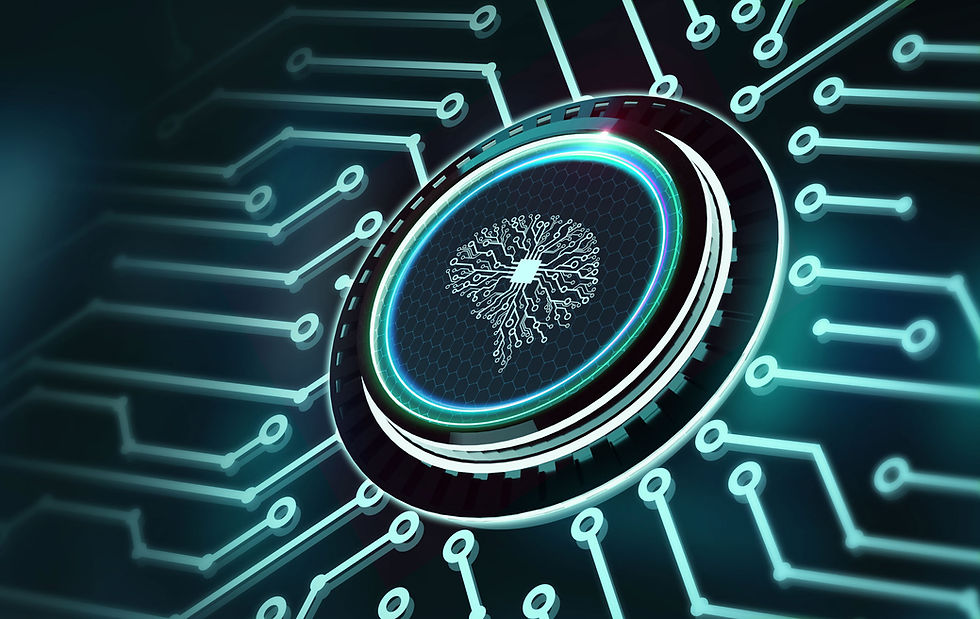Building Bridges in Healthcare: A Guide to Creating an Interoperability Hub with FHIR
- Sash Barige

- Jan 17, 2016
- 3 min read

🚀 Exciting News for Healthcare IT Enthusiasts! 🚀
Hey everyone! 👋 As a healthcare IT leader working in the trenches of innovation, I couldn't wait to share some groundbreaking developments with you all! 🌟
At our Healthcare IT services company, we've been hard at work crafting an EHR (Electronic Health Record) solution that's not just cutting-edge but also tailored to meet the dynamic needs of modern healthcare ecosystems. 💻🏥
One of the key pillars of our solution is its seamless integration with FHIR (Fast Healthcare Interoperability Resources) and HL7 (Health Level Seven International) standards. Now, you might be wondering, what's the big deal with FHIR and HL7, right? Let me break it down for you. 🛠️
FHIR is like the magic glue that binds different healthcare systems and applications together. It enables smooth data exchange and interoperability, allowing healthcare providers to access and share patient information effortlessly. 💪 This means less time spent on administrative tasks and more focus on delivering quality care.
On the other hand, HL7 has been a cornerstone of healthcare data standards for years. It ensures that data is structured, organized, and standardized across different platforms, making it easier to interpret and use effectively. 📊
Now, let's talk turkey—how does all this tech wizardry translate into tangible benefits for our customers, particularly hospitals? 🏨💰
Firstly, interoperability through FHIR and HL7 opens up new avenues for revenue generation. By streamlining data exchange and communication between systems, hospitals can optimize workflows, reduce errors, and ultimately, enhance operational efficiency. 💼💸
But it's not just about the bottom line. Interoperability also empowers clinics, hospitals, and physicians to deliver better patient care. 🌟 Imagine a world where patient records seamlessly follow them throughout their healthcare journey, from clinic visits to hospital stays and beyond. It's not just a dream—it's the reality we're creating. 🌍👩⚕️
Building FHIR within our EHR involves a meticulous process of data mapping, integration, and testing. It's like piecing together a complex puzzle, ensuring that every data point fits snugly into place. 🧩 But the end result? A cohesive, interoperable system that revolutionizes how healthcare providers work.
And let's not forget about the interoperability hub—a central hub that acts as a nerve center for data exchange. It's like Grand Central Station for healthcare data, facilitating seamless communication between different systems and applications. 🚂💨
The real magic happens when we start tracking the patient journey. 🌟 With interoperability, we can paint a holistic picture of each patient's health history, treatments, and outcomes. This isn't just about managing symptoms—it's about promoting wellness and improving lives. 🌿💖
So, there you have it—our journey into the world of FHIR, HL7, and interoperability. It's not just about technology—it's about transforming healthcare and making a real difference in people's lives. 💪🏥 Let's continue to innovate, collaborate, and revolutionize the way we deliver care! 🚀🌟
Listing some of the steps for building an interoperability hub using FHIR (Fast Healthcare Interoperability Resources):
Assess Needs and Requirements: Start by understanding the specific needs and requirements of your healthcare organization or clients. Identify the data sources, systems, and applications that need to be integrated into the interoperability hub.
Design Architecture: Develop a robust architecture for the interoperability hub. This includes defining data models, APIs (Application Programming Interfaces), and communication protocols that will be used for data exchange. FHIR's RESTful APIs are often used for their flexibility and scalability.
Data Mapping and Transformation: Map the data elements from different systems to FHIR resources. This involves identifying common data elements, standardizing terminology, and transforming data formats as needed to ensure compatibility and consistency.
Implement FHIR Server: Set up a FHIR server as the core component of the interoperability hub. The FHIR server will act as a central repository for healthcare data, allowing for seamless storage, retrieval, and exchange of FHIR resources.
Integration with Existing Systems: Integrate the FHIR server with existing EHR systems, EMRs (Electronic Medical Records), clinical databases, and other healthcare applications. Use FHIR APIs and standards to enable bidirectional data flow between the hub and these systems.
Data Validation and Quality Assurance: Implement data validation mechanisms to ensure the accuracy, completeness, and integrity of data exchanged through the interoperability hub. Perform thorough testing and quality assurance processes to identify and rectify any issues.
Security and Compliance: Implement robust security measures to protect sensitive healthcare data. Ensure compliance with healthcare regulations and standards such as HIPAA (Health Insurance Portability and Accountability Act) to safeguard patient privacy and confidentiality.
Monitoring and Maintenance: Set up monitoring tools and processes to continuously monitor the performance, availability, and security of the interoperability hub. Implement regular maintenance and updates to keep the system optimized and secure.
Training and Support: Provide training and support to healthcare professionals and IT staff involved in using and maintaining the interoperability hub. Ensure they have the necessary knowledge and resources to leverage the hub effectively.
Jan/17/2016
Sash Barige




Comments